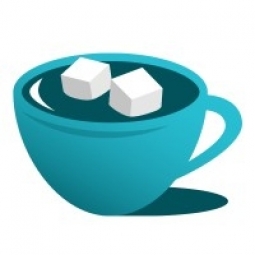适用行业
- 水泥
- 零售
适用功能
- 销售与市场营销
用例
- 施工管理
- 时间敏感网络
服务
- 培训
关于客户
本案例研究中的客户是一家成功的建筑公司老板,他每周工作 60 小时,感觉自己是维持公司运转的关键。他强烈希望将公司的日常管理权交给半退休人员,这样他就可以出去旅行,有更多的时间陪伴家人。然而,他感觉自己陷入了困境,找不到出路。他通过努力工作赢得了自由,但却无法享受自由,因为他深深地参与了公司的日常运营。
挑战
Business Success Consulting Group 是一家 B2B 咨询公司,在系统化自己的咨询活动和帮助其他公司优化业务方面面临着挑战。首席执行官阿迪·克莱维特 (Adi Klevit) 指出,企业主在实现业务系统化时常常感到不知所措,常见的问题是从哪里开始、如何找到时间以及如何让领导层和员工参与进来。一些企业曾尝试自行记录程序或将其分配给团队中的其他人,但这些努力往往达不到要求。常见问题包括缺乏专业知识、责任感和毅力、无法访问的文件、过时的程序以及缺乏对团队成员的培训和指导。没有适当的系统的成本是巨大的,企业会失去潜在的收入和利润,员工流动率很高,并在混乱和低效率中挣扎。
解决方案
为了应对这些挑战,Adi 向她的客户介绍了 SweetProcess,一种文档管理软件。她认识到它在增强咨询服务方面的价值,并对客户的积极反馈印象深刻,他们发现它易于使用、优雅且简单。阿迪帮助客户的方法包括确定需要记录的流程、绘制公司流程流程图、与不同团队成员一起处理文档、设定截止日期并让他们负责,以及就如何让系统中的每个人都遵循进行培训和指导。公司。一个著名的成功故事是一位客户拥有一家成功的建筑公司。在 Business Success Consulting Group 的帮助下,他能够为公司的各个方面(包括人力资源、营销、销售、财务、项目管理、施工和业务发展)制定清晰的程序,从而使公司系统化。还制定并实施了概述公司重要规则和指南的政策。
运营影响
数量效益

Case Study missing?
Start adding your own!
Register with your work email and create a new case study profile for your business.
相关案例.

Case Study
System 800xA at Indian Cement Plants
Chettinad Cement recognized that further efficiencies could be achieved in its cement manufacturing process. It looked to investing in comprehensive operational and control technologies to manage and derive productivity and energy efficiency gains from the assets on Line 2, their second plant in India.

Case Study
Improving Production Line Efficiency with Ethernet Micro RTU Controller
Moxa was asked to provide a connectivity solution for one of the world's leading cosmetics companies. This multinational corporation, with retail presence in 130 countries, 23 global braches, and over 66,000 employees, sought to improve the efficiency of their production process by migrating from manual monitoring to an automatic productivity monitoring system. The production line was being monitored by ABB Real-TPI, a factory information system that offers data collection and analysis to improve plant efficiency. Due to software limitations, the customer needed an OPC server and a corresponding I/O solution to collect data from additional sensor devices for the Real-TPI system. The goal is to enable the factory information system to more thoroughly collect data from every corner of the production line. This will improve its ability to measure Overall Equipment Effectiveness (OEE) and translate into increased production efficiencies. System Requirements • Instant status updates while still consuming minimal bandwidth to relieve strain on limited factory networks • Interoperable with ABB Real-TPI • Small form factor appropriate for deployment where space is scarce • Remote software management and configuration to simplify operations

Case Study
Digital Retail Security Solutions
Sennco wanted to help its retail customers increase sales and profits by developing an innovative alarm system as opposed to conventional connected alarms that are permanently tethered to display products. These traditional security systems were cumbersome and intrusive to the customer shopping experience. Additionally, they provided no useful data or analytics.

Case Study
How Sirqul’s IoT Platform is Crafting Carrefour’s New In-Store Experiences
Carrefour Taiwan’s goal is to be completely digital by end of 2018. Out-dated manual methods for analysis and assumptions limited Carrefour’s ability to change the customer experience and were void of real-time decision-making capabilities. Rather than relying solely on sales data, assumptions, and disparate systems, Carrefour Taiwan’s CEO led an initiative to find a connected IoT solution that could give the team the ability to make real-time changes and more informed decisions. Prior to implementing, Carrefour struggled to address their conversion rates and did not have the proper insights into the customer decision-making process nor how to make an immediate impact without losing customer confidence.

Case Study
Ensures Cold Milk in Your Supermarket
As of 2014, AK-Centralen has over 1,500 Danish supermarkets equipped, and utilizes 16 operators, and is open 24 hours a day, 365 days a year. AK-Centralen needed the ability to monitor the cooling alarms from around the country, 24 hours a day, 365 days a year. Each and every time the door to a milk cooler or a freezer does not close properly, an alarm goes off on a computer screen in a control building in southwestern Odense. This type of alarm will go off approximately 140,000 times per year, equating to roughly 400 alarms in a 24-hour period. Should an alarm go off, then there is only a limited amount of time to act before dairy products or frozen pizza must be disposed of, and this type of waste can quickly start to cost a supermarket a great deal of money.








